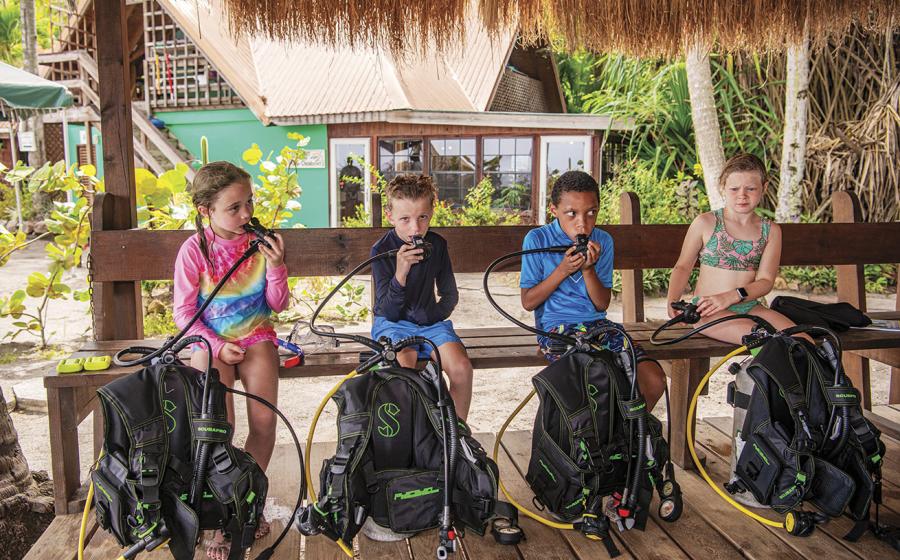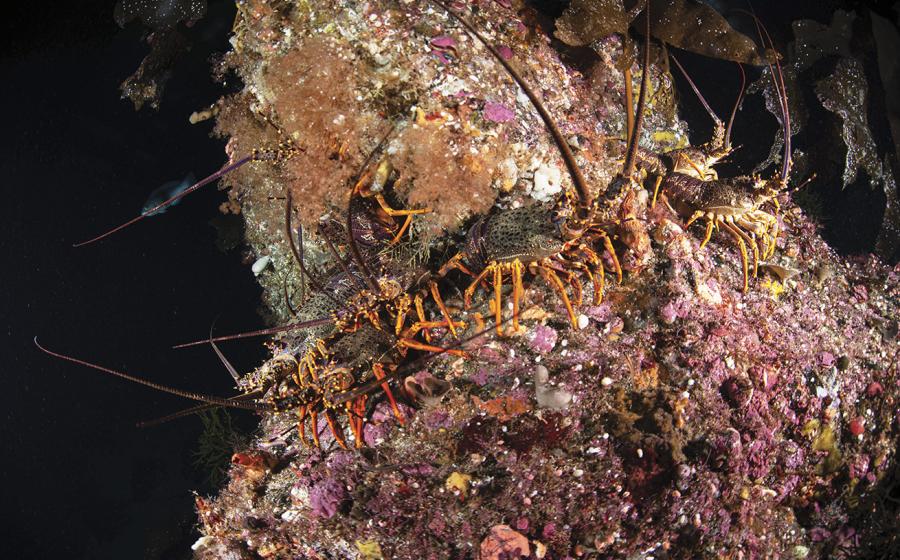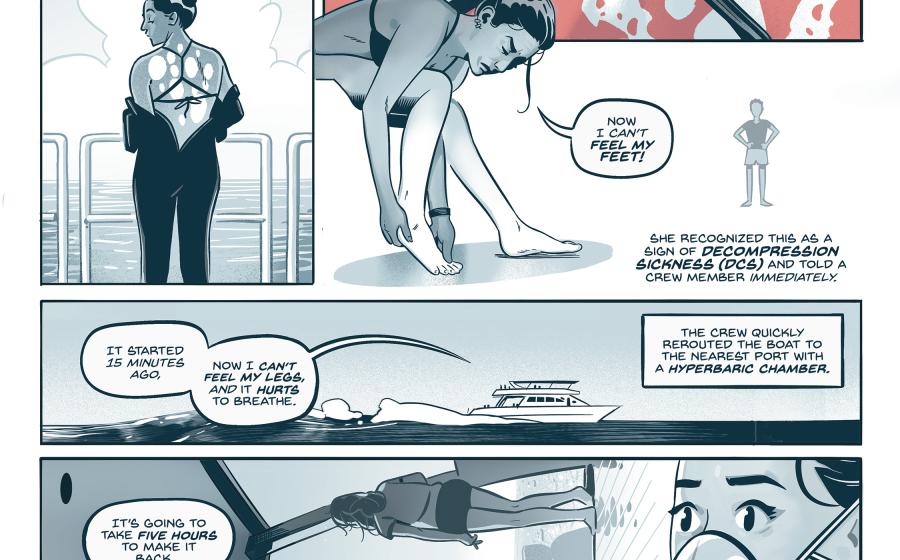Solomon Islands, June 2007
As we approached Guadalcanal from Brisbane, we could see the importance of the level area known as Henderson Field to the Allies during WWII. The islands we saw by air were very hilly and mountainous but this area by Honiara yielded the only area level enough to build an airfield.
Three people with Bilikiki shirts met those of us flying Solomon Air at the airport. The Spirit of Solomons (SOS) is operated by the same company as the Bilikiki and they share the same on-shire personnel. Our group of 5 divers was taken to a resort to wait for an hour while the crew finished replenishing the boat with supplies. This offered us a chance to become acquainted and begin to adjust to the heat and humidity of the island. As soon as the other 5 divers arrived after having their flight delayed in Fiji, we set off for the week.
After spending a rainy, cloudy week on the GBR and then being greeted with the heat and humidity of the Solomons, I wasn't sure I had made a good decision scheduling a trip to the Solomon Islands after my week in Australia. It turned out to be a week equal to that spent on the Great Barrier Reef!
The SOS boat was very roomy for our group of 10 divers from Australia, England, Singapore and the US. Every couple was assigned their own cabin and I was given my own cabin as well. The double bed underneath and single bed above provided more than enough space for a single. A bathroom, which contained a shower, stool, and sink, was contained in each cabin.
The SOS was photographer-friendly. A camera room containing 2 large tables provided adequate space for us to spread out our laptops and camera equipment while not in use. Both 110 and 220 outlets were provided so adapters were unneeded. The camera room wasn't air-conditioned but the oscillating fans on the walls kept us cool.
The dive deck was spacious enough that we had sufficient elbowroom to prepare our BCDs. With the dining area on the second deck, we had plenty of room to spread out during our surface intervals. The interesting mix of ages, occupations, and dive experience of the diver produced many interesting conversation throughout the day.
The crew of the SOS was outstanding. The two boat managers, Sam and Kellie, were training two replacements to lead SOS trips for the following weeks while they were on vacation. Sam and Kellie were very accomplished divers with a knack for spotting things to show divers. Josh and Liz had managed the Nai`a in Fiji in past years and were a nice addition. The dive deck crew seemed to delight in doing their jobs and to do them without being noticed.
We were briefed about the boat and our diving. A memorable comment from our dive briefing was to be back on the boat with 500 psi, but not really, we just wanted you back on the boat with air in your tanks. You can infer from this that we're allowed to dive our own profiles for the week.
The first dive of the day was at 8:00 and the rest were every three hours after that. Each diver had a tag on their tank and a corresponding number on a board. Our number was supposed to be moved between the On Boat to Off Boat sections of the board to indicate our location. I, along with others, neglected doing this but the vigilant crew helped keep track of this. An instructor was in the water on each dive and the BCDs were counted at the end of each dive to be sure all divers were back on the boat before moving to the next location.
We traveled to nearby sites during the day and traveled between islands groups at night. The person guiding the dive took a tinnie ride to check the current before the briefing since the currents varied from nonexistent to mild to ripping. The dive briefing with the dive site illustrated in colored chalk provided us with suggested depths and things unique to the site. Photographers were given an idea of what type of photography was most appropriate for the site wide angle, macro, etc. Once the nitrox was analyzed and gear assembled, crewmembers loaded our gear onto the tinnie. We put on our BCDs, masks, and fins in the tinnie and a back roll put us into the water. Night dives were offered every day. The quick tinnie ride got us to the dive sites and a back roll on the count of 3 put us in the water. The 2 tinnies would float above us waiting for us to surface. They would take turns taxing us back to the SOS so having everyone surface at the same time was unnecessary.
Dives on this trip included walls, seamounts, and areas of WWII wreckage. We were offered 28 dives over 6 days. Our tanks were a consistent 3000 psi and the nitrox, which was provided for additional charge, was typically around 32%, plus or minus .5. Our checkout dives were spent diving a couple Japanese wrecks off Guadalcanal. The shark, rays, eels, lionfish, nudibranch, anonomefish with an occasional clownfish, barracuda, jacks, and bumphead parrotfish packed our dives with plenty of action. Sam took pride in finding pigmy seahorse and we saw them on several dives. The pier at Yellow Beach has long since collapsed and there were plenty of WWII vehicle parts still visible among the rubble. The track off an old tank lay next to what was left of the piling. The truck and tractor looked like they could still be driven.
I thought the most memorable dives were at Barracuda Point. We dove this site three times and each dive was different due to the change in current and available sunlight. Imagine three huge schools of barracudas, jacks, and fusiliers intermingling as they circled in the current above you as gray, blacktip, and whitetip sharks swam back and forth along the reef. It's hard to think watching this action would get boring but a beautiful mix of hard and soft corals, sponges, and sea fans was waiting for us around the corner. Crab, lobsters, sea hares, sea cucumbers, cuttlefish, and an occasional shark visited us on the night dives. As you might imagine, over half of our dives were an hour or longer since were multi-level diving as we worked out way up the reefs. We didn't always have 500 psi left in our tanks but we did have air when we got back aboard the SOS.
The food on the SOS was served buffet style and there is no way to go hungry on this boat. Breakfast, consisting of cereal, fruit, toast, eggs, or bacon/sausage was served after the first dive. Cookies, fruit, and/or popcorn were provided between dives. Coffee, tea, limewater, and water were always available at no cost. Soda, beer, and wine was available using the honor system when the bar manager was not around. Sandwiches, fried fish, lasagna, fresh fruit, and/or salad were provided for lunch. Fresh fish, lamb, chicken, tacos, and a tasty dessert were served throughout the week. Lobster, crab, and steak were served on the last night.
A couple of shore excursions to meet islanders and shop for carvings, weavings, etc. were scheduled for anyone who wanted to go ashore during the week. A PowerPoint is shown ahead of time to help people learn the value of the items that are for sale. Sam and Kellie brought Solomon dollars to purchase things and we made arrangements before leaving for the week to pay them back.
Things I wished I had known ahead of time: .Bring a reef hook. There are several dives that the current is very strong and a significant amount of air is used up trying to stay in place and there are none available onboard. .Sam is a vegetarian and there is always a variety of food available at mealtimes. There was little need to bring extra treats. .Garlic is used/overused (depending on your taste for garlic) at dinner and supper to season most dishes. Be sure to let them know if you don't care of garlic and food will be available without the garlic seasoning.
The amazing variety of life on the coral reefs of the Solomon Islands created many unforgettable moments. I would recommend a week on the Spirit of Solomons to those wanting to experience these same moments!
As we approached Guadalcanal from Brisbane, we could see the importance of the level area known as Henderson Field to the Allies during WWII. The islands we saw by air were very hilly and mountainous but this area by Honiara yielded the only area level enough to build an airfield.
Three people with Bilikiki shirts met those of us flying Solomon Air at the airport. The Spirit of Solomons (SOS) is operated by the same company as the Bilikiki and they share the same on-shire personnel. Our group of 5 divers was taken to a resort to wait for an hour while the crew finished replenishing the boat with supplies. This offered us a chance to become acquainted and begin to adjust to the heat and humidity of the island. As soon as the other 5 divers arrived after having their flight delayed in Fiji, we set off for the week.
After spending a rainy, cloudy week on the GBR and then being greeted with the heat and humidity of the Solomons, I wasn't sure I had made a good decision scheduling a trip to the Solomon Islands after my week in Australia. It turned out to be a week equal to that spent on the Great Barrier Reef!
The SOS boat was very roomy for our group of 10 divers from Australia, England, Singapore and the US. Every couple was assigned their own cabin and I was given my own cabin as well. The double bed underneath and single bed above provided more than enough space for a single. A bathroom, which contained a shower, stool, and sink, was contained in each cabin.
The SOS was photographer-friendly. A camera room containing 2 large tables provided adequate space for us to spread out our laptops and camera equipment while not in use. Both 110 and 220 outlets were provided so adapters were unneeded. The camera room wasn't air-conditioned but the oscillating fans on the walls kept us cool.
The dive deck was spacious enough that we had sufficient elbowroom to prepare our BCDs. With the dining area on the second deck, we had plenty of room to spread out during our surface intervals. The interesting mix of ages, occupations, and dive experience of the diver produced many interesting conversation throughout the day.
The crew of the SOS was outstanding. The two boat managers, Sam and Kellie, were training two replacements to lead SOS trips for the following weeks while they were on vacation. Sam and Kellie were very accomplished divers with a knack for spotting things to show divers. Josh and Liz had managed the Nai`a in Fiji in past years and were a nice addition. The dive deck crew seemed to delight in doing their jobs and to do them without being noticed.
We were briefed about the boat and our diving. A memorable comment from our dive briefing was to be back on the boat with 500 psi, but not really, we just wanted you back on the boat with air in your tanks. You can infer from this that we're allowed to dive our own profiles for the week.
The first dive of the day was at 8:00 and the rest were every three hours after that. Each diver had a tag on their tank and a corresponding number on a board. Our number was supposed to be moved between the On Boat to Off Boat sections of the board to indicate our location. I, along with others, neglected doing this but the vigilant crew helped keep track of this. An instructor was in the water on each dive and the BCDs were counted at the end of each dive to be sure all divers were back on the boat before moving to the next location.
We traveled to nearby sites during the day and traveled between islands groups at night. The person guiding the dive took a tinnie ride to check the current before the briefing since the currents varied from nonexistent to mild to ripping. The dive briefing with the dive site illustrated in colored chalk provided us with suggested depths and things unique to the site. Photographers were given an idea of what type of photography was most appropriate for the site wide angle, macro, etc. Once the nitrox was analyzed and gear assembled, crewmembers loaded our gear onto the tinnie. We put on our BCDs, masks, and fins in the tinnie and a back roll put us into the water. Night dives were offered every day. The quick tinnie ride got us to the dive sites and a back roll on the count of 3 put us in the water. The 2 tinnies would float above us waiting for us to surface. They would take turns taxing us back to the SOS so having everyone surface at the same time was unnecessary.
Dives on this trip included walls, seamounts, and areas of WWII wreckage. We were offered 28 dives over 6 days. Our tanks were a consistent 3000 psi and the nitrox, which was provided for additional charge, was typically around 32%, plus or minus .5. Our checkout dives were spent diving a couple Japanese wrecks off Guadalcanal. The shark, rays, eels, lionfish, nudibranch, anonomefish with an occasional clownfish, barracuda, jacks, and bumphead parrotfish packed our dives with plenty of action. Sam took pride in finding pigmy seahorse and we saw them on several dives. The pier at Yellow Beach has long since collapsed and there were plenty of WWII vehicle parts still visible among the rubble. The track off an old tank lay next to what was left of the piling. The truck and tractor looked like they could still be driven.
I thought the most memorable dives were at Barracuda Point. We dove this site three times and each dive was different due to the change in current and available sunlight. Imagine three huge schools of barracudas, jacks, and fusiliers intermingling as they circled in the current above you as gray, blacktip, and whitetip sharks swam back and forth along the reef. It's hard to think watching this action would get boring but a beautiful mix of hard and soft corals, sponges, and sea fans was waiting for us around the corner. Crab, lobsters, sea hares, sea cucumbers, cuttlefish, and an occasional shark visited us on the night dives. As you might imagine, over half of our dives were an hour or longer since were multi-level diving as we worked out way up the reefs. We didn't always have 500 psi left in our tanks but we did have air when we got back aboard the SOS.
The food on the SOS was served buffet style and there is no way to go hungry on this boat. Breakfast, consisting of cereal, fruit, toast, eggs, or bacon/sausage was served after the first dive. Cookies, fruit, and/or popcorn were provided between dives. Coffee, tea, limewater, and water were always available at no cost. Soda, beer, and wine was available using the honor system when the bar manager was not around. Sandwiches, fried fish, lasagna, fresh fruit, and/or salad were provided for lunch. Fresh fish, lamb, chicken, tacos, and a tasty dessert were served throughout the week. Lobster, crab, and steak were served on the last night.
A couple of shore excursions to meet islanders and shop for carvings, weavings, etc. were scheduled for anyone who wanted to go ashore during the week. A PowerPoint is shown ahead of time to help people learn the value of the items that are for sale. Sam and Kellie brought Solomon dollars to purchase things and we made arrangements before leaving for the week to pay them back.
Things I wished I had known ahead of time: .Bring a reef hook. There are several dives that the current is very strong and a significant amount of air is used up trying to stay in place and there are none available onboard. .Sam is a vegetarian and there is always a variety of food available at mealtimes. There was little need to bring extra treats. .Garlic is used/overused (depending on your taste for garlic) at dinner and supper to season most dishes. Be sure to let them know if you don't care of garlic and food will be available without the garlic seasoning.
The amazing variety of life on the coral reefs of the Solomon Islands created many unforgettable moments. I would recommend a week on the Spirit of Solomons to those wanting to experience these same moments!






